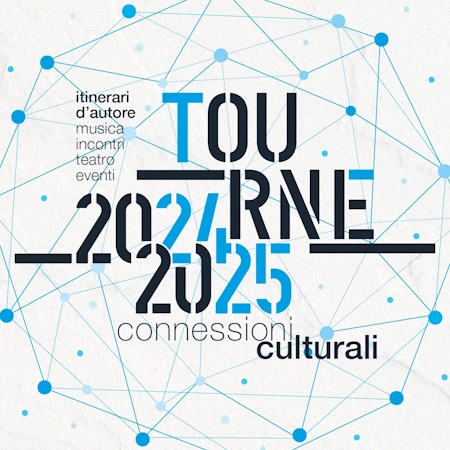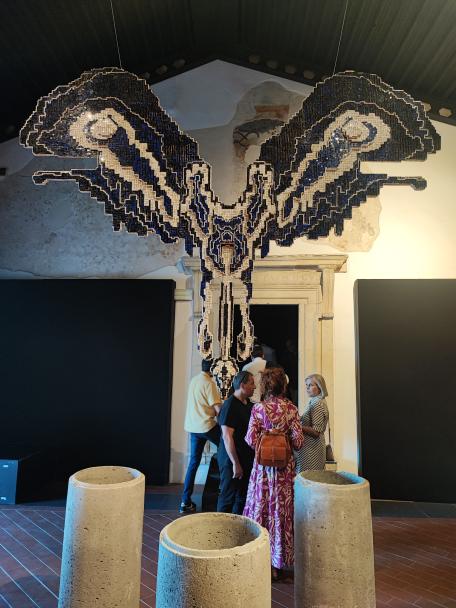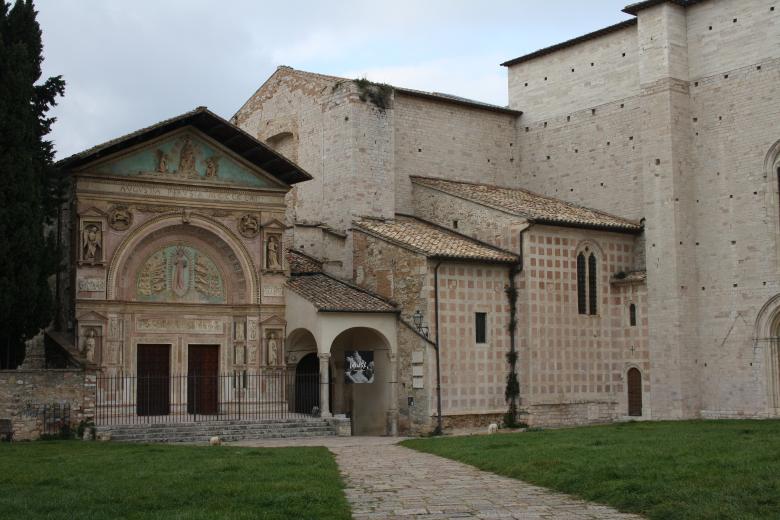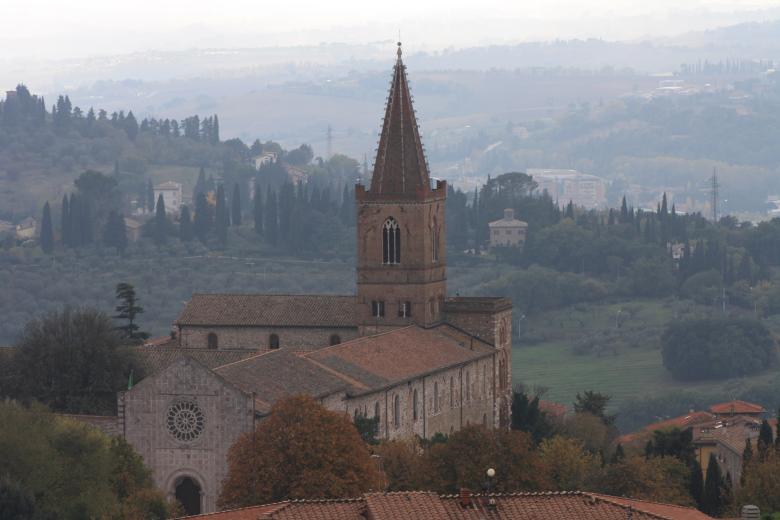The figures of
Matteo da Correggio and
Ermanno da Sassoferrato are more specifically linked to the history of Perugia as they were, respectively,
podestà and
capitano of the people in 1278 as the fountain was being built. Next to the latter is
Victoria Magna clad as a simple woman of the times. And the figure of
Euliste, the legendary Trojan hero to which the city traced its roots, could not but be placed between the two statues of the city's most potent men. Finally, there are figures from the Old and New Testament:
San Michele, Melchisedech, San Giovanni Battista, David, Moses and
Solomon.
The larger
lower basin features a wide-ranging figurative cycle set on a base of light red marble. Made entirely of white marble, the basin's outer wall is divided into 25 parts. Each part consists of two panels separated from one another by a column and from the others with a grouping of four slim columns. The fifty panels can be divided into categories based on the topics they represent: the twelve months by their zodiac symbols, the eight liberal arts (Philosophy, which was usually considered a real science, was added to the traditional seven arts), stories from the Old Testament (Adam and Eve with the serpent, their banishment from heaven, Samson and the Lion, Samson and Delilah, David and Goliath), the mythical story of the foundation of Rome (Rea Silvia, the wolf and the twins, Romulus and Remus as they interpret the meaning of the flight of the birds), and two tales from Aesop (the wolf and the lamb, the wolf and the crane). Very reminiscent of these tales for its moral lesson is the panel with the little lion being beaten by its owner, signifying that you must nip evil in the bud and thus prevent the enemy from becoming a menace. It can also be interpreted as a warning to parents to educate their children well from a tender age. And then there are the depictions of the political emblems of the
Guelph lion and the
Perugian Gryphon. The significance of one panel, however, is unclear: the eagle depicted with two faces, most likely an homage the sculptor Giovanni Pisano wanted to pay to his Saint.
Fun Fact
It goes without saying that the people of Perugia were very involved in the construction of the fountain and the aqueduct that lead to the centre of town from Mt. Pacciano, and that the choice of icons was of vital importance. The people were also called upon to help finance the project by donating sums of money, each according to his trade, to help pay for a fountain whose cost seemed to be more than the city alone could bear. Contrary to their predictions, however, the money was given back as promised in the pact, between January and April of 1286.
Information and tips
Piazza IV Novembre can be easily reached by foot from any of the parking lots located in the city centre.
You can take a bus or taxi to it from the train station.
Or take the Minimetrò and get off at the Pincetto station.






























.jpeg/0d7d918e-eddd-ed4c-9da2-23a6917261f0?width=780)
.jpg/57eda7af-f14d-d05d-f11c-d1cdb56c5f9f?width=780)








